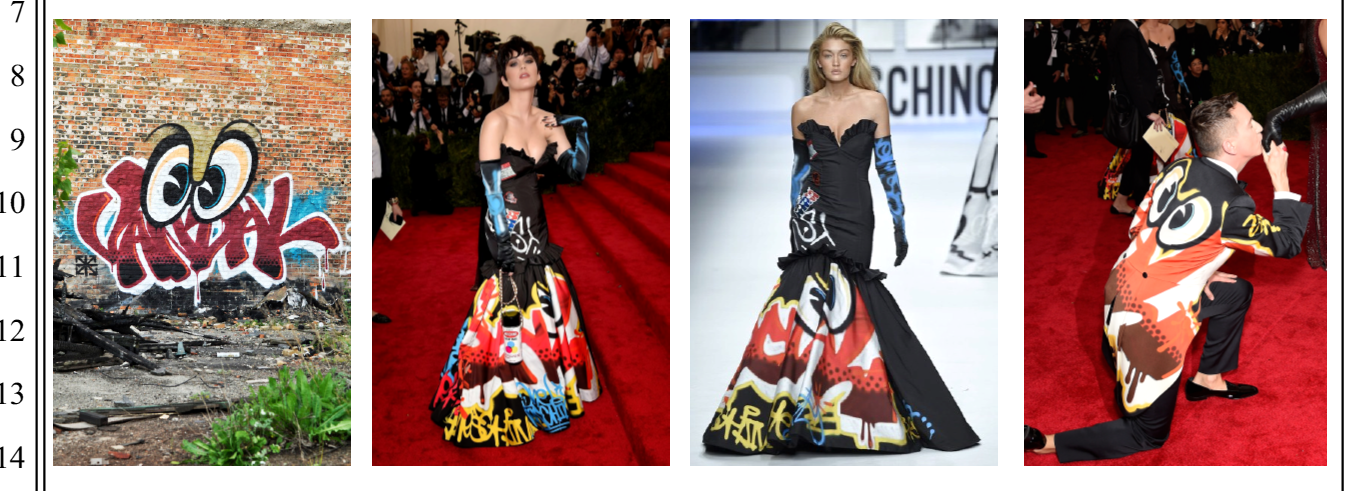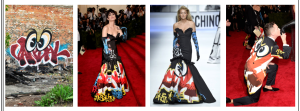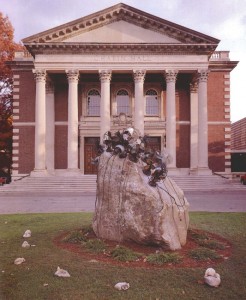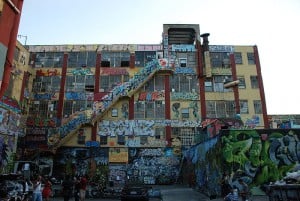Last week Apollo magazine published my comments about the recent 5Pointz decision. The article can be found here, and the text is reprinted below:
A Signpost for Artists’ Rights or the Beginning of the End? 5Pointz Damages Award May be A Fork in the Road
Topics: Graffiti Art, Visual Artists Rights Act of 1990, VARA, Jerry Wolkoff, Copyright, 5Pointz, Street Art
Is Coopting Graffiti Artist's Street Cred a Fair Use?
Estate of Graffiti Artist Sues McDonald’s Over Fast-Food Décor
The estate of Dashiell “Dash” Snow, better known as graffiti artist “Secret Snow”—has sued McDonald’s over allegedly infringing use of Snow’s street art in McDonald’s dining rooms. The lawsuit in the Central District of California is the latest in a series of cases in which street artists are asserting their rights in copyright without any concession about whether the creation has other legal issues (i.e., trespassing or vandalism). Based on the survival of other recent similar cases, this latest case could be a headache for the giant restaurant chain, though it may have interesting fair use arguments based on the contrasting nature of the street vs. corporate uses.
Topics: Digital Millennium Copyright Act, Rime, Graffiti Art, 17 U.S.C. § 1202, Moschino, Dashiell Snow, Street Cred, McDonald's
Is Graffiti Ineligible for Copyright Protection Just Because the Act of Tagging is Illegal?
After reports of a settlement proved premature, designer Moschino S.p.A. and its creative director Jeremy Scott have moved for summary judgment on the copyright claims filed last year by street artist Joseph Tierney, better known as “Rime.” The motion raises a number of arguments, but the most significant is the contention that Tierney’s work, as graffiti, is ineligible for copyright protection in the first instance. The view here is that defendants are mistaken about the eligibility question. And even if defendants can convince the court that they are right about the legal question of the availability of copyright for street art or graffiti, Tierney’s factual rebuttal on the question of whether had permission to create the art that was used in Moschino’s clothing designs makes it hard to imagine that they could convince the court that there are no material facts in dispute—the applicable standard for a motion for summary judgment. It will be very interesting too to see how the court grapples with questions about whether characters and symbols can be copyright management information (CMI) under the Digital Millennium Copyright Act (DMCA, 17 U.S.C. § 1202).
Topics: copyright management information, DMCA, Rime, Graffiti Art, Copyright, Moschino, CMI
Graffiti on the Runway: Street Artist Rime Pursues Lawsuit Against Moschino for Damaging His Street Cred
The fusion of street art, high fashion, and the law is hardly new, but the Italian designer Moschino’s latest foray into this genre has landed the company in court. Joseph Tierney, a well known graffiti artist who works under the pseudonym “Rime”, filed a complaint against Moschino and its creative director, Jeremy Scott, alleging copyright infringement, trademark violations under the Lanham Act, and unfair competition, and appropriation of name and likeness under California law. Moschino’s allegedly unauthorized use of his work has harmed the artist in numerous ways, Tierney alleges, not the least by opening him up to accusations of selling out. In the words of Tierney’s complaint: “nothing is more antithetical to the outsider ‘street cred’ that is essential to graffiti artists than association with European chic, luxury and glamour – of which Moschino is the epitome.” This theory of harm was something we talked about at the "Copyrights on the Street" panel at the Copyright Society of the USA meeting in Newport this year, and it is now being put to the test.
Topics: Joseph Tierney, copyright management information, Vandal Eyes, Digital Millennium Copyright Act, Rime, The Wall Street Journal, Graffiti Art, 17 U.S.C. § 1202, Gigi Hadid, Hollywood Reporter, Jeremy Scott, Copyright, Moschino, Lanham Act, The New York Times
Anish Kapoor in Versailles: Requiring Removal of Graffiti Turns Into Compelled Speech
Back in June, sculptor Anish Kapoor installed the sculpture Dirty Corner on the grounds of the famous palace there. Kapoor, who can’t seem to avoid public controversy over his work, saw the sculpture first become the object of debate with regard to its form itself, specifically, the suggestion that the shape of the large work was anatomical. Kapoor coyly fostered speculations about what it was meant to represent, but ultimately demurred that his “work has multiple interpretive possibilities." With recent vandalism and a court order that he remove the graffiti, however, the story has turned into one more about free expression and compelled speech. So far, it does not have a happy ending.
Topics: Rock Fan, Versailles, The Art Newspaper, Fabien Bouglé, Ku Klux Klan, Dirty Corner, Graffiti Art, France, Williams College, Fleur Pellerin, Nazis, Palace of Versailles, Confederate Flag, Richard Serra, Catherine Pégard, refugee crisis, Williams College Museum of Art, First Amendment, Yardbird Suite, Anish Kapoor, François Hollande, vandalism, anti-Semitic, Graffiti, Amherst College, Tilted Arc
Shepard Fairey Wanted on Vandalism Charge for Street Art in Detroit—Will This be the VARA Test Case?
Detroit police have issued a warrant for well-known artist Shepard Fairey in connection with his recent visit to the city, on suspicion of vandalism. While Fairey was apparently in Detroit to paint a commissioned mural at One Campus Martius, he told the Detroit Free Press, “I still do stuff on the street without permission. I'll be doing stuff on the street when I'm in Detroit.” According to the Free Press:
Topics: Richard Prince, Jeff Koons, Patrick Cariou, Moral Rights, Andre the Giant, Graffiti Art, Visual Artists Rights Act of 1990, Barack Obama, One Campus Martius, Banksy Does New York, VARA, Banksy, Shepard Fairey, appropriation copyright, Copyright, 5Pointz, Hope, Detroit Free Press, Associated Press, Fair Use
5Pointz Property Owner Sued Again Over Whitewashing of Graffiti—Measure of Damages Bears Watching
Several street artists have sued the property owners of the building in Queens that became known as “5Pointz”—a “Mecca” of graffiti and street art. This is the second such lawsuit, after another group of artists failed to obtain a preliminary injunction in November, 2013, and the owners whitewashed nearly all of the painting on the buildings. The new lawsuit seeks damages related to the whitewashing itself, alleging that it was done hastily and secretly without giving the artists sufficient time either to remove or document their work. It relies on the Visual Artists Rights Act of 1990 (VARA), the lone moral rights provision of the Copyright Act.
Topics: HBO, Copyright Act, Ishmael, Moral Rights, Richard Miller, Cady Nolan, Rodney Rodriguez, FCEE, Christoph Büchel’s, Graffiti Art, Visual Artists Rights Act, Patch Whiskey, Kai Niederhausen Semor, Kenji Takabayashi, recognized stature, Banksy Does New York, Jimmy C, VARA, Jerry Wolkoff, Bienbenido Guerra, Luis Gomez, MassMoCA, Banksy, TOOFLY, 17 U.S.C. § 106A, Carlo Nieva, Copyright, 5Pointz, PANIC, James Cochran, Sotheby's, Maria Castillo
“Copyrights on the Street” at Copyright Society Annual Meeting June 9, 2015
I am pleased to be participating in a panel discussion in two weeks at the Copyright Society of the U.S.A.’s annual meeting in Newport, Rhode Island. The panel, entitled “Copyrights on the Street: Creating and Preserving Graffiti and Other Art in Public Spaces,” will explore:
Topics: Copyrights on the Street Creating and Preserving G, Newport, Rhode Island, Graffiti Art, Visual Artists Rights Act, Deirdre A. Fox, Copyright Society of the U.S.A., Peter Caruso, VARA, Kernochan Center for Law Media and the Arts, Phillippa Loengard, Events, 17 U.S.C. § 106A, Columbia Law School, Copyright, Christopher J. Robinson
New Graffiti Copyright Lawsuit Continues Growing Trend
News came last week that another lawsuit has been filed over allegations of misappropriation of graffiti images. In this case, as summarized nicely by Cait Munro on ArtNet (I haven’t seen the complaint yet), graffiti artist Craig Anthony Miller:
Topics: Craig Anthony Miller, "Elephant Mural", Graffiti Art, Visual Artists Rights Act, VARA, Toll Brothers, Copyright, 5Pointz, Cait Munro, ArtNet
10, 9, 8…the Biggest Art Law Report Stories of 2014 and a Look Ahead
As the ball teeters above Times Square, and the Glühwein begins to mull on the Art Law Report stove (don’t forget the cinnamon!), a gimmicky but apropos act of reflection is to look back at the biggest stories of 2014, both in art law generally and for yours truly and Sullivan & Worcester LLP. In highly subjective, unverifiable, and immediately criticizeable order, here they are. Thanks as always for reading, and best wishes for in interesting, prosperous New Year. If you agree, disagree, or otherwise, please continue to stay in touch and carry the conversation forward.
Topics: Comedy Central, Deaccession, Schwabinger Kunstfund, Charitable Foundations, National Gallery of Art, Knoedler, Cornelius Gurlitt, Blogs, authentication, authenticity, parody, William Corcoran, Moral Rights, Above the Law, Germany, George Washington University, Glühwein, Nazi-looted art, Gurlitt Collection, Norton Simon, Graffiti Art, Superior Court, Cy Pres, Washington DC, VARA, Detroit Institute of Arts, Bankruptcy, Corcoran College of Art + Design, Dumb Starbucks, Preemption, Asher Edelman, DIA, Restitution, Marei Von Saher, Artmentum GmbH, Bavaria, Sullivan & Worcester LLP, World War II, Copyright, Times Square, Art Fairs, Kunstmuseum Bern, Corcoran Gallery, Ninth Circuit Court of Appeals, Museums, Raubkunst, Detroit Bankruptcy, Fair Use, Münchner Kunstfund, Foreign Cultural Exchange Jurisdictional Immunity, Graffiti, Civil Forfeiture, Art Law Report








